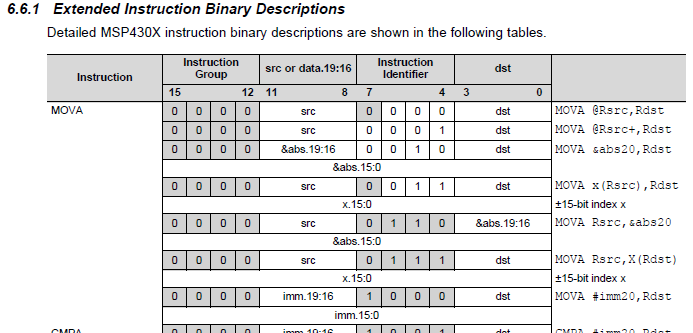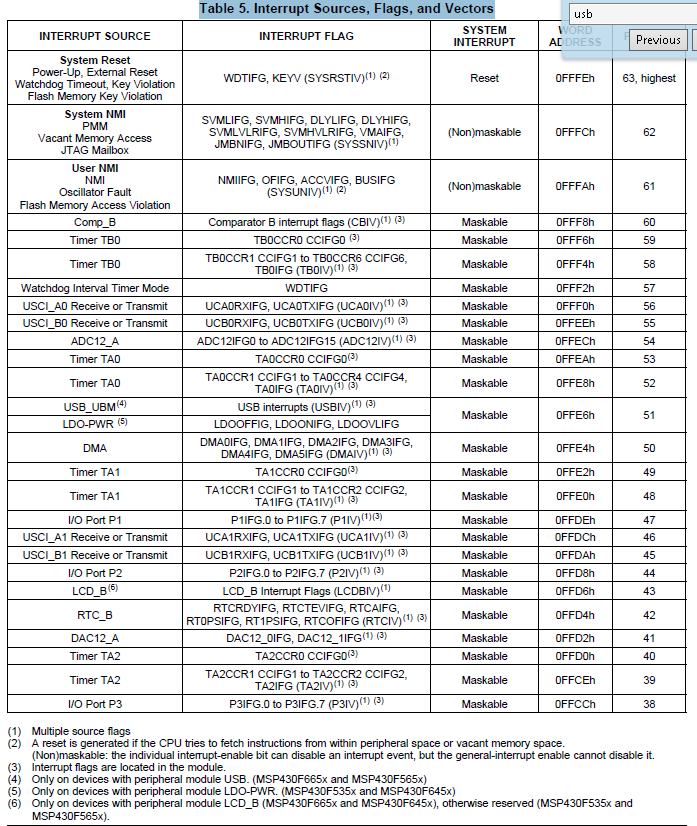Hello,
We are currently working on a main memory bootloader that is based on the MSPBoot project, this bootloader uses a proxy table that hat uses a BRA instrunction to a ISR.
The orgional bootloader uses a 16-bit BRA instruction to jump to a given ISR, this instruction is if we are correct represented by the hex value 0x4030.
Table proxy table entrys are then e.g.:
0x4030, (uint16_t) NameOfISRRoutine1
0x4030, (uint16_t) NameOfISRRoutine2
etc
Because of our code size (it extens above the first 64kb) we need to make 20-bit jumps, can someone tell us where w can find the hex value for a 20-bit address jump? Or what the hex value of a 20-bit jump (BRA instruction) is? Our target is the MSP430F5359, and we use code composer version 5.5.
Many thanks in advance.
PS we did't know if this is the right forum section, if not please forgive us.




